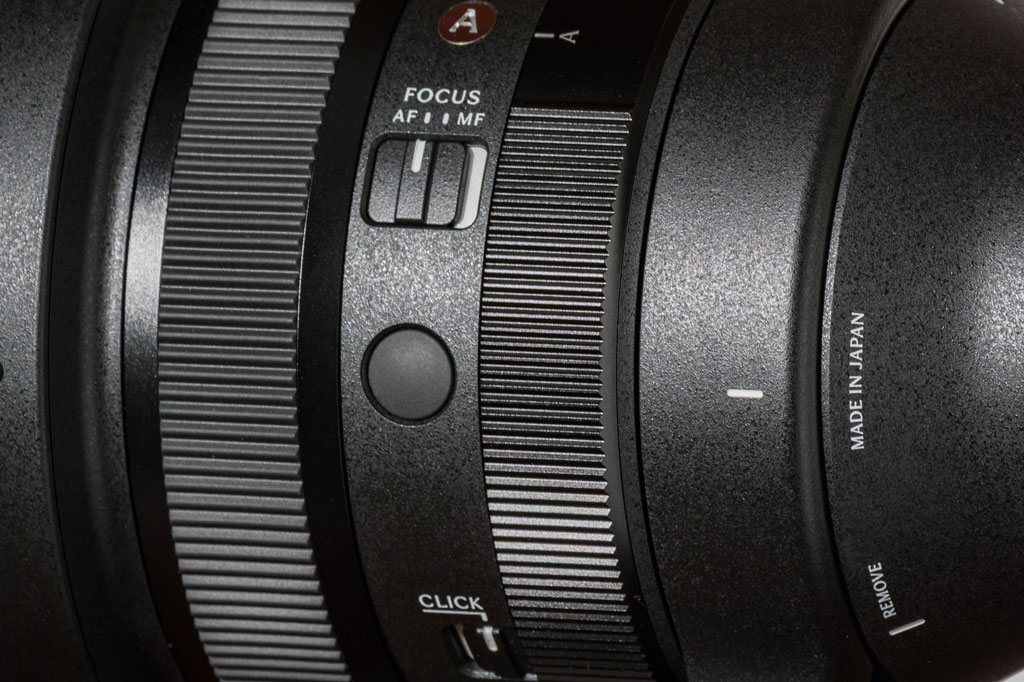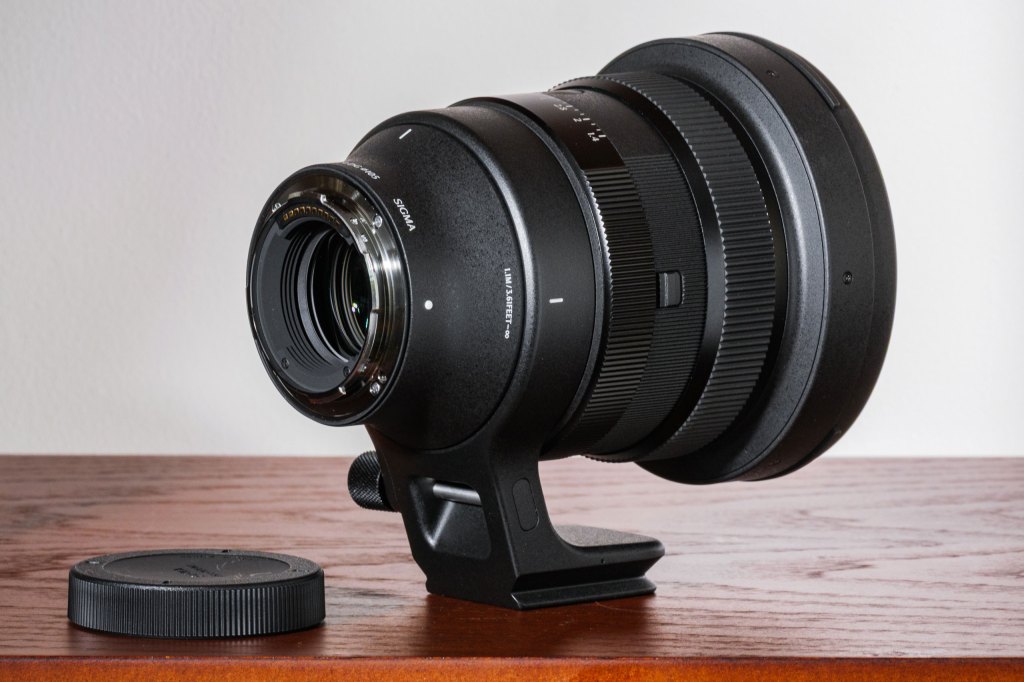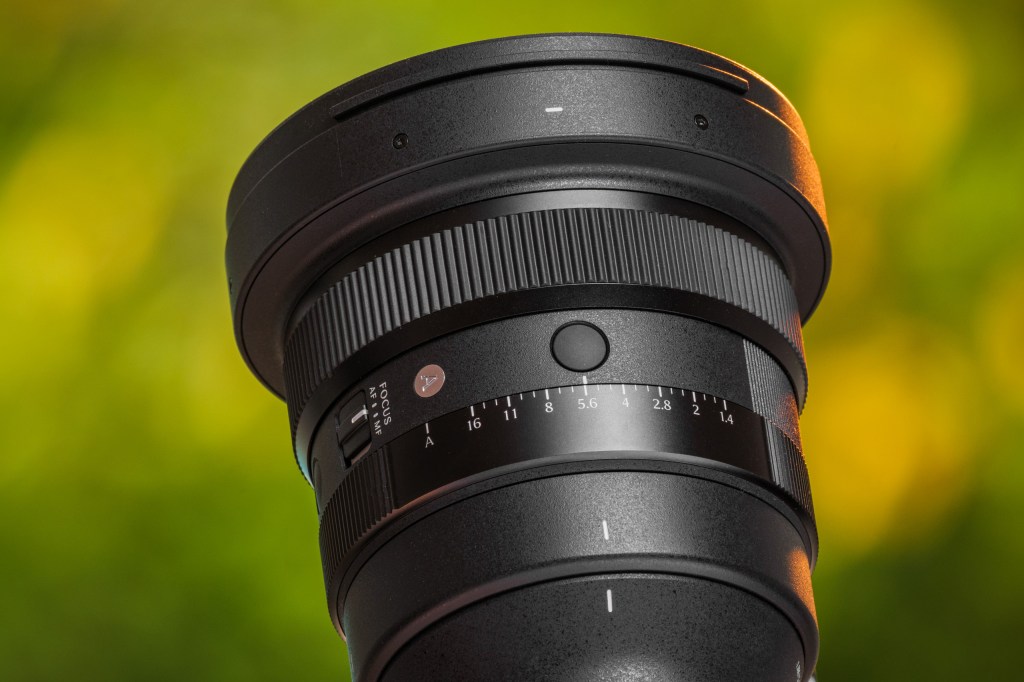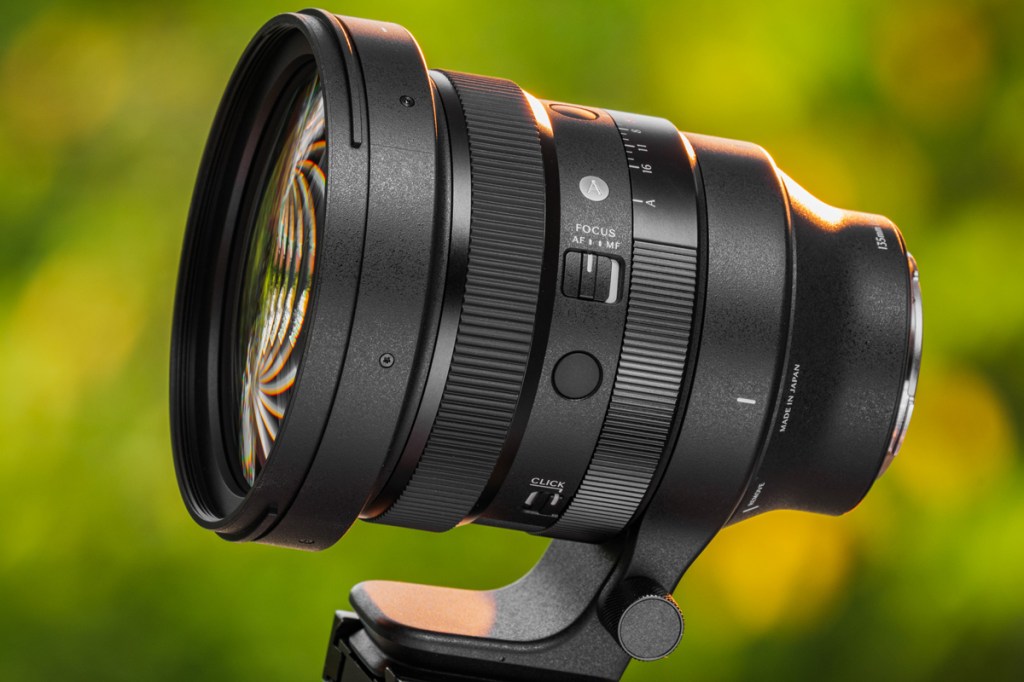Amateur Photographer verdict
A powerhouse lens that delivers stunning sharpness, creamy bokeh, and excellent control of aberrations. A new benchmark for 135mm lenses and a standout choice for portrait and creative shooters- Great resolution even wide open
- Subject-isolating depth-of-field at f/1.4
- Clear and distortion-free images
- Good price compared to other brands
- A bit heavy
- 105mm filter thread an inconvenience of the large front element
At a glance:
- Price $1,899 / £1,649
- Filter thread: 109mm
- Leica L and Sony E-mount
- Weather-sealed construction
- 135.5mm long, 1430g
I wonder how much the 135mm focal length is on the radar of anyone other than those looking for a portrait lens. It isn’t really considered a ‘regular’ lens, but it has a unique position between the ‘moderate telephotos’ at the 70mm/85mm/105mm mark, and what I’d consider ‘long telephotos’ from 180mm onwards. The 150mm sits in about the same area, but we don’t see too many of those either, these days.
There’s a special place in my heart for the 135mm, as my third interchangeable lens was a Pentax 135mm f/3.5 for my Chinon CM4. I had what I considered to be some success with it at college and it played a significant part in the beginnings of my love of street photography. So when this new Sigma version was announced, it had my attention immediately.
But on reflection, I realised that as much as I used to love that focal length, I haven’t used a 135mm fixed lens for a very long time. With its dramatically wide maximum aperture of f/1.4 and Sigma’s recent excellent performance in my head, I was ready to love this £1649 lens before I’d even requested it for review. And that’s not a healthy position for a reviewer to take.
Sigma 135mm F1.4 DG DN Art – Features
This new Sigma Art lens is designed specifically for full-frame mirrorless cameras and comes in versions for the Leica L-mount or Sony’s E mount – this example is for L and was tested on the Lumix S1R ll. The great attraction, of course, is that f/1.4 maximum aperture, which is a whole 2/3rd of a stop larger than the f/1.8 lens that came before it. I suspect the 1.66x more light entering the lens may be less of a draw for most photographers than the reduced depth-of-field and enhanced subject isolation that this super-wide maximum aperture will achieve.

Long wide-aperture lenses like this have been somewhat prone to chromatic separations in the past, that leave some wavelengths unfocused and/or coloured fringed about high contrast edges. But Sigma assures us that its use of four elements made in its Fluorite-like FLD glasses and two aspherical elements will avoid this and deliver sharpness and clarity right across the frame.
That massive f/1.4 maximum aperture is achieved using a 13-bladed iris. It closes to f/16, via in-camera controls or by the manual ring on the lens that can click at 1/3rd stop intervals, or not at all once the ring is de-clicked.

Heavier lenses like this can put a strain on a camera’s mount, so Sigma provides us with a tripod foot to take the weight away from the camera. This is moulded with an Arca-Swiss fitting that will slide directly into tripod heads designed for this standard. The collar’s restraining knob can be loosened to allow the lens to rotate or for the foot to be removed entirely.
Sigma 135mm F1.4 DG DN Art – Build and handling
Sigma has been making its Art series since 2012, and has garnered plenty of experience in the manufacture of lenses that have a premium feel and finish. My test sample arrived clothed in bubble wrap and without the usual fancy packaging. But even nestled in its bed of polystyrene chips in a humble brown box, it was able to provoke a feeling of confidence in me that I was in for a very good experience.
The lens is thickset and solid like a bulldog’s head, and it weighs more than its size might indicate – it requires a degree of force to lift that surprised me almost every time I picked it up. With a 105mm front element one might expect all that weight to be shifted to the front of the barrel, but Sigma has managed to find a way to position the weight in the middle of the construction so it sits over the thread on the tripod foot.
For the reviewer looking for new things to write about, Sigma’s standardisation of the Art lens layout is a little frustrating. But for the user, it presents a consistency across the range that means you’ll know where everything is without having to take your eye from the viewfinder, whichever lens is mounted on your camera. This 135mm f/1.4 has the usual AF/MF sliding switch, a click/declick slider for the aperture ring, and a lock for that ring so it can be restrained in the manual range or in Auto mode. We have a pair of custom buttons that can be customised to activate one of 18 settings in the camera, such as AF modes, AF/AE lock and depth-of-field preview.

Once you are over the weight of the lens, you’ll find it very comfortable to use. But when hand-holding, you’ll need to adjust your grip, so the left hand is supporting the lens. Otherwise it will be too much to handle for a long shoot.
Sigma 135mm F1.4 DG DN Art – Autofocus
The Sigma 135mm F1.4 DG Art lens uses a pair of floating focus groups to help shift the right amount of glass inside the barrel. This allows it to find focus quickly and with as little distortion as possible. And it works.
I used the lens on the Lumix S1R ll and S5 to see how it performed being driven by both phase detection and contrast detection systems, and I found it extremely able in either case. That Panasonic’s DFD contrast-detection system may not have a great reputation stems primarily from difficulties in low light and with fast moving subjects when tracking is required. But in bright light with a contrasty scene, the system is extremely fast – and this lens did nothing to hamper performance in such conditions.
With moving subjects and phase detection I had good success too. But while that f/1.4 aperture lets in a lot of light to help AF systems, its diminutive depth-of-field demands a degree of accuracy that’s hard to satisfy. The hit rate wasn’t 100%, but I suspect the camera/user has more to answer for than the lens.
Sigma 135mm F1.4 DG DN Art – Image quality
The short answer to the Image Quality question is that the Sigma 135mm F1.4 is very good and you won’t be disappointed. In more detail, you’ll find it really very nicely sharp at all apertures and right across the frame.
Clearly, with a headline-grabbing maximum aperture, Sigma has put a lot of effort into the optical performance of this lens at the wider apertures, While the pinnacle of its detail-gathering power may not be at f/1.4, you may need to compare f/1.4 images with those shot in the middle of the range to see that things can get even better. For central and corner resolution f/4 is the way to go – which is where some 135mm lenses start their aperture range anyway.
Images shot at f/1.4 are very nicely detailed, and while they might lack some of the contrast of the middle apertures, few will find they fall short. My test charts show me that f/2.8 is where things really tighten up and that quality drops off again at f/16, where resolution isn’t as good as it is at f/1.4. But in real-life shooting, you’ll be delighted all the way though the range.
Some people these days are happy to put up with poor resolution and horrific chromatic aberrations so long as the bokeh of the lens in question is ‘amazeballs’, but in this lens you get excellent technical performance alongside aesthetically pleasing out-of-focus areas. At f/1.4 we get a lot of out-of-focus areas in our pictures, so it’s important they look nice. Focus transitions are beautifully smooth, and highlights are clean, rounded and will not distract from the subject.
On high contrast edges at f/1.4, you might find a tiny amount of colour separation if you look hard enough. But thanks to the L-Mount Alliance’s integrated software corrections, there’s no vignetting or distortion to speak of.
Sigma 135mm F1.4 DG DN Art – Verdict
I loved my Pentax 135mm f/3.5 very much, but when I put it on a digital camera, I discovered it wasn’t nearly as sharp as I thought. I still like it, but I suspect my love of this Sigma lens will be a little more enduring.
I love the angle of view of a 135mm, and I love the subject isolating qualities of an f/1.4 aperture, and in this lens I can have both. Crucially, though, I can have both without the usual costs of a fast telephoto – poor resolution wide open and chromatic fringing on high contrast edges.
Sigma has done a great job with this model, and has created a lens that’s as lovely to look through as it is lovely to inspect its images close-up. The impact of that shallow depth-of-field really helps images to stand out, and the creaminess of the out-of-focus areas brings a level of sophistication we have no a right to expect at this price.
I was ready to like this lens before I got hold of it, but have used it with as much scepticism as I could muster. And I’ve found it’s as good as I had hoped.

Related reading:
- Review: Sigma 135mm f/1.8 DG HSM Art
- Sony FE 135mm F1.8 GM review
- Nikon Nikkor Z 135mm f/1.8 S Plena lens review
Full specifications
| Filter Diameter | 105mm |
| Lens Elements/Groups 17 | 17/13 |
| Diaphragm blades | 13 |
| Aperture | f/1.4-16 |
| Min focus | 110cm |
| Length | 135.5mm |
| Diameter | 111.7mm |
| Weight | 1430g |
| Lens Mount | Leica L and Sony E |
| Included accessories | Tripod foot, lens hood, pouch, strap |















